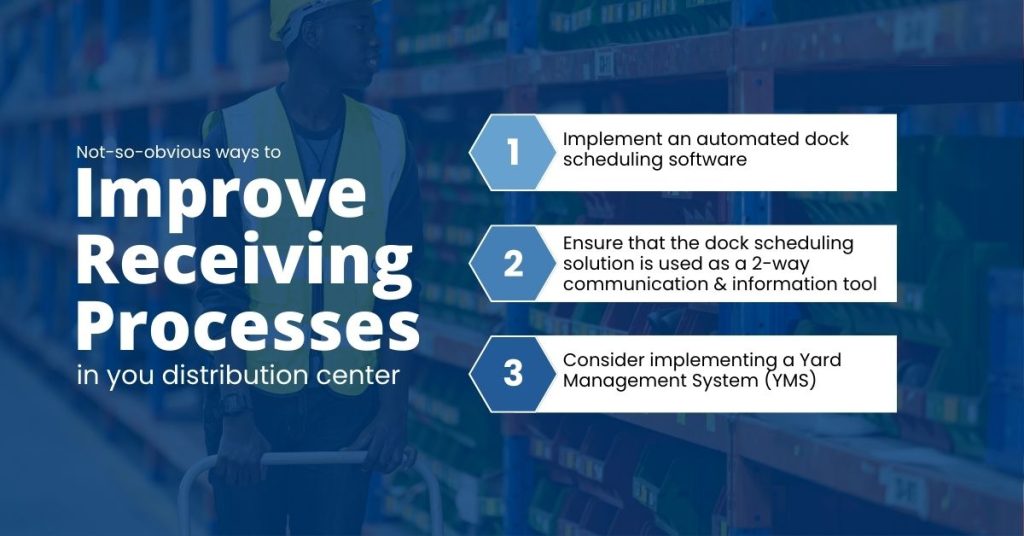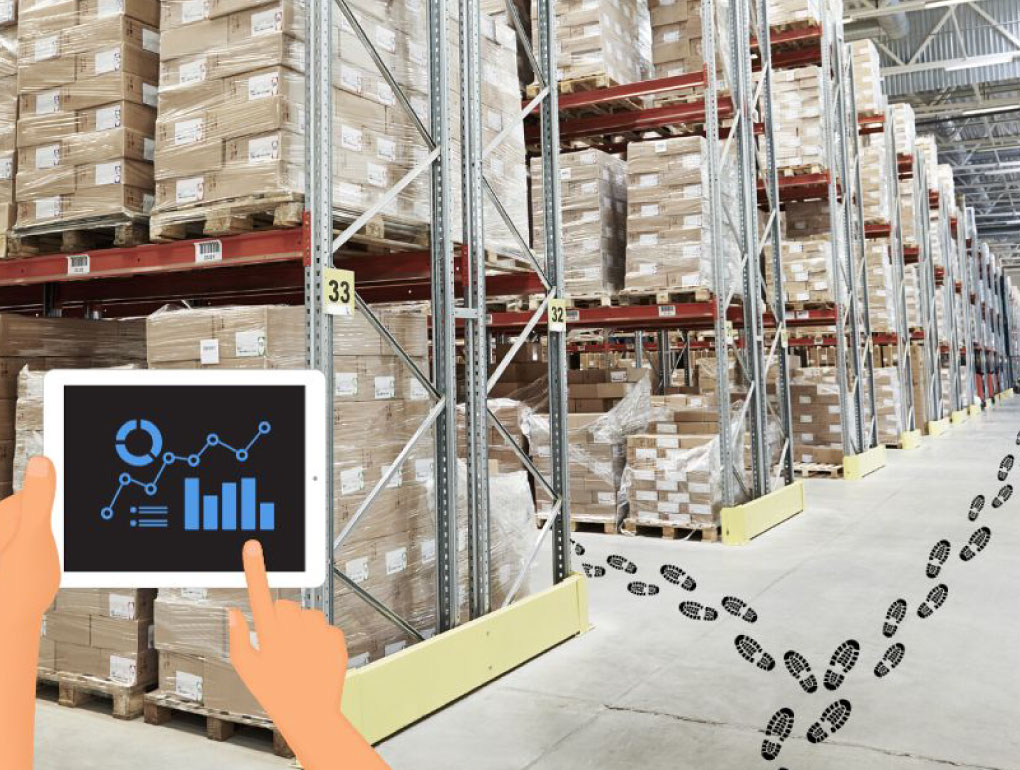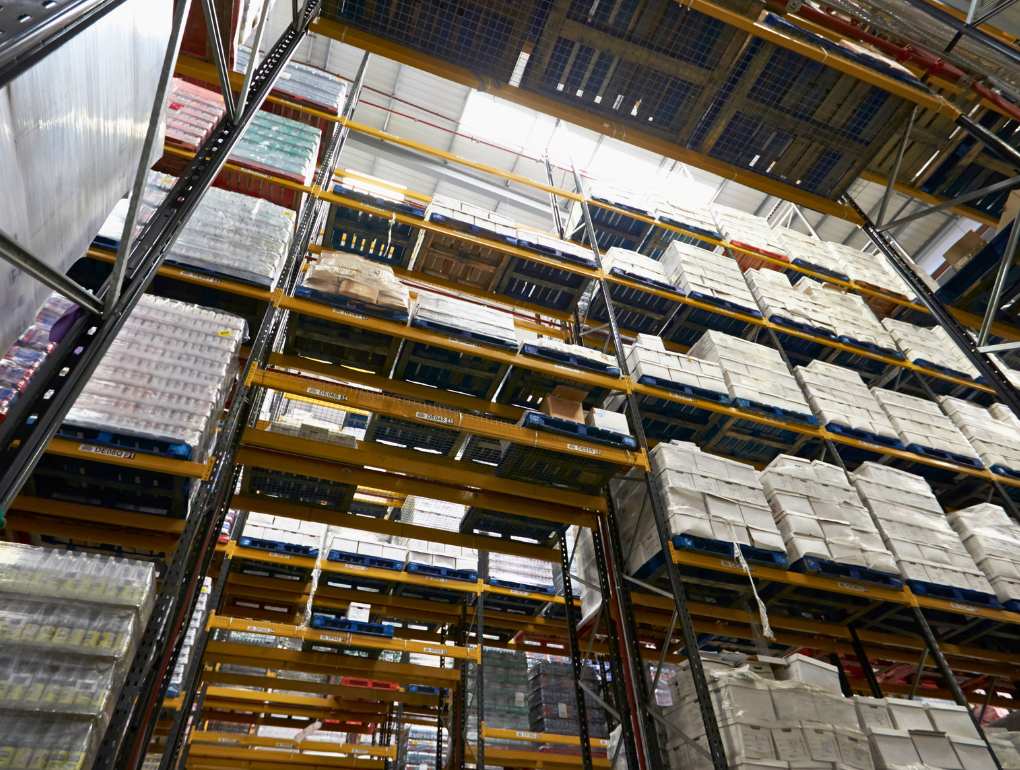Receiving Efficiency, Receiving Cycle Time, Cost of Receiving Per Line, Order Fulfillment Time, Dock Utilization, Dock-to-Stock Cycle Time.
The above items are Receiving Key Performance Indicators or metrics (commonly called “KPIs”) that were covered in our other blog posts titled, “Warehouse KPI Metrics” and are definitely key indicators and metrics that should be utilized to operate a dock effectively.
For the more advanced operation of a complex distribution center receiving dock, especially in large operations, there are some not-so-obvious approaches and solutions that are critical to vastly improved efficiency, productivity, and even improved physical dock capacity!
Consider the following recent survey results collected by Loadsmart, Inc. about receiving docks that certainly help us understand why truck drivers are so frustrated in many situations waiting to be unloaded and received:
- 40%: Average number of appointments with dwell times over two hours
- 12%: Average number of appointments with detention fees
- $66/hour: Average detention rates are continuing to rise
- 10%: % of distribution/fulfillment centers and warehouses that have implemented a dock scheduling software solution
One might suggest that the above statistics mostly relate to receiving dock “live-unloads” (where truckers are on-site waiting for the unloading to occur) and you can improve your situation by moving to mostly “dropped” trailer loads that enable your dock to control the timing of the unloading of trailers.
However, many distribution centers and warehouses do not have the luxury of building or leasing ever-larger trailer staging yards.
Even with dropped trailer loads being implemented, only 10% of warehouses report the use of dock scheduling software (and the use of a method employing spreadsheets does not count as an “automated dock scheduling solution” in the year 2023).
Consider further that only a reported 25% of warehouses have implemented a Yard Management System (YMS) software solution to manage these large trailer staging yards they are implementing.
With the influx of large amounts of “just-in-case” inventory during the recent pandemic, the rate and amount of detention and demurrage fees are continuing to rise beyond the statistics listed above.
Through Hy-Tek Consulting’s work with clients in their operations, the following not-so-obvious action items are imperative to be able to turn your dock into a true world-class operation:

Step 1: Implement an automated dock scheduling software solution and arm it fully with intelligence.
An automated dock scheduling solution is vital in managing large, complex docks; web or cloud-based systems with access portals are best.
When searching for a dock scheduling software solution, ensure it has “length of time assignment” intelligence parameters. These parameters can be as simple as enabling actual productivity rates for unloading pallets, cartons to calculate unloading time required OR these can incorporate input from a Labor Management System (LMS) where objective time-based engineered labor standards for the receiving operations have been set and deployed.
MHE automation levels on the dock also drive length of time assignments (i.e. conveyor based receiving vs. manual receiving productivity rates).
Don’t fall into the trap of assigning all appointments with the same length of time! Our consulting professionals are amazed at the preponderance of companies that while proud of implementing a dock scheduling system, just don’t utilize the full intelligence and common sense of the solution to remember that “not all receiving appointment time windows should be the same time length”!
This also applies to scheduling dropped trailers from your yard and greatly assists in reducing or eliminating detention/demurrage fees and improves productivity both inside the distribution center and outside in the yard.
Step 2: Ensure that the selected dock scheduling solution is used as a two–way communications & information tool.
The solution should be used by all parties involved including the carriers delivering to your operations and further back up the supply chain as far as possible (transportation management providers).
This communications and information power is immense in that it provides carriers the opportunity to self-schedule automatically, provide as much information about the incoming load (be able to append automated advanced ship notices (ASNs), packing lists, bills of materials, etc. to the appointment) usually through a web portal.
Not only will this enable the system to schedule the appropriate length of time for the specific receiving appointment, but it will arm your entire distribution center management team with vital information PRIOR to loads arriving to the facility, enabling you to staff and improve productivity throughout the receiving and putaway process.
Other transportation partners and providers further back in the supply chain (think ocean carriers, freight brokers, managed transportation providers, etc.) should also be empowered to provide “whatever information they have, whenever they have it” through access to the portal.
Step 3: Consider implementing a Yard Management System (YMS) software solution.
The number of operations still using manual methods such as “the pen, paper, and clipboard method” to manage large trailer yards is disappointing, to say the least!
With the dock scheduling solution in place, if you don’t have a Yard Management System (YMS) software solution, consider implementing such a system.
Some of these systems have a dock scheduling solution feature (ensure it meets the functional depth covered in numbers 1 & 2 above, though!) or can be easily interfaced to your dock scheduling system to provide a seamless connection between the inside and outside of your facility and to your carriers and transportation partners.
Thanks to RFID, Drones, and Light Detection and Ranging (LIDAR) technologies and functionality, there are numerous powerful and affordable web or cloud-based YMSs from which to choose.
The above not-so-obvious approaches when employed in receiving in conjunction with “living” KPIs and metrics can ensure the achievement of a world-class receiving operation; an operation in which labor requirements are reduced drastically in this challenging 21st-century warehousing labor availability climate and resulting in the highest levels of receiving efficiencies.
Who knows, maybe even the truck drivers will spread the word across social media that visiting your operations has turned into a very cooperative and even pleasant experience!






